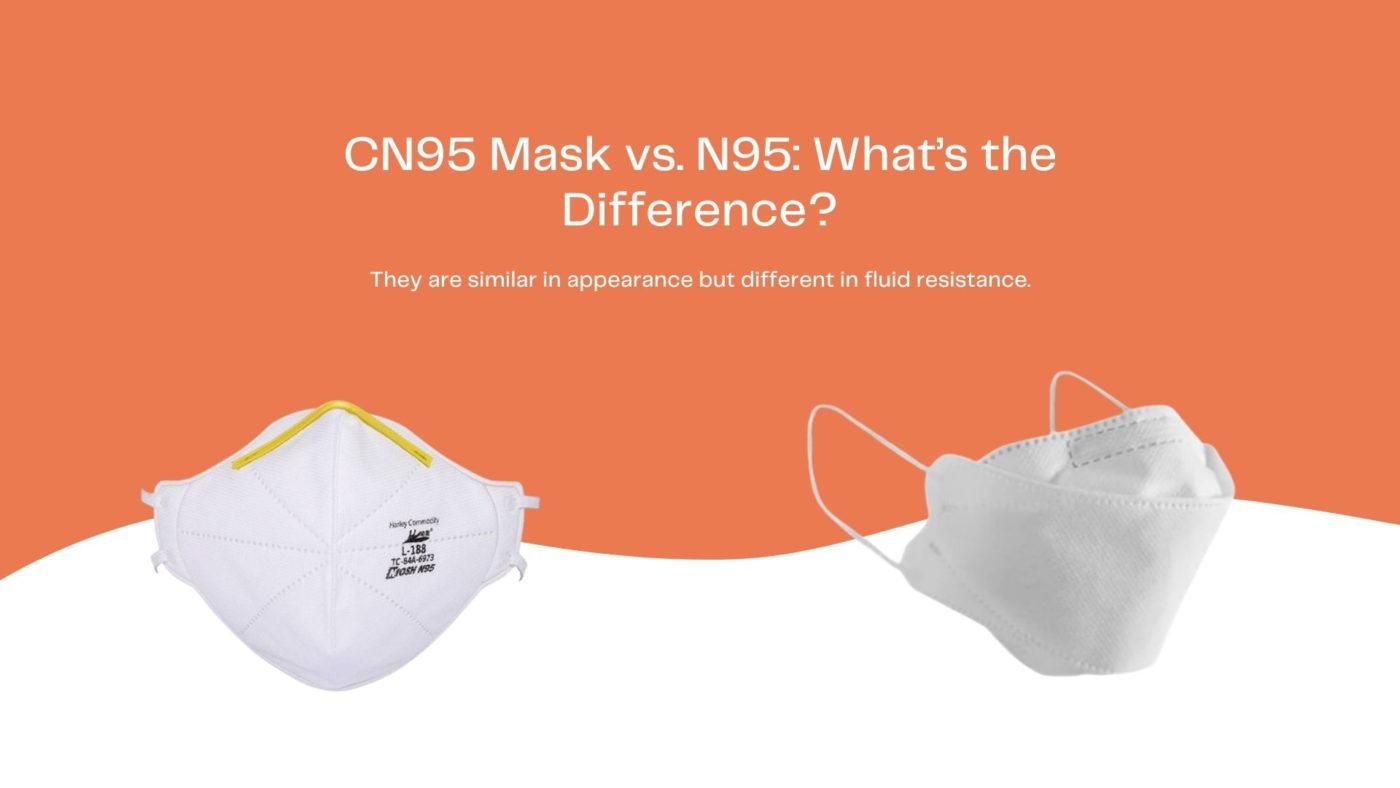No products in the cart.
Face Masks
CN95 Mask vs. N95: What’s the Difference?
No one was prepared for the pandemic, even the first world countries. And since the first outbreak of COVID-19 last December, the global death toll is now 1.08 million. With over 37 million infected worldwide, protecting yourself against the dreaded virus is a must.
Now, more than ever is the best time to invest in our health and safety. But since it is a novel virus, even the experts are divided on which kind of mask can provide maximum protection.
While some say that ordinary surgical masks will do just fine, some contests that higher levels of masks like KN95, N95, and respirators are needed. This divided stand on mask standards made the people even confused.
Today, we’ll resolve this confusion by discussing the differences, similarities, benefits, and disadvantages of CN95 and N95 masks. Through this, we can offer more level-headed information on the matter.
What is a CN95 mask?
CN95 is a lightweight respirator mask that has a convex shape design and a collapsable resistant shell. Most manufacturers of this mask use top-notch micro-fine media technology to protect users against respirable suspended particulates. Its filters are equipped with high-dust holding features that don’t get clogged. Expect superior breathing comfort with the mask’s butterfly-shaped vent valve since built-up heat inside the mask is effectively removed.
What’s more, you won’t have a hard time communicating. This respirator mask has successfully passed the dolomite test, so it can resist clogging even in a very dusty environment. It also has an activated carbon layer that can absorb high levels of obnoxious vapors and odors.
CN95 masks also come with headbands sewn on the masks’ external filter media to keep it from being punctured and leaking. It’s also safe for people with skin allergies since this mask is usually made with skin-friendly, latex-free textiles. Despite repeated use under extreme temperature, your CN95 mask will remain in good condition.
This type of mask protects against oil mist and solid dust. CN95 masks that come with P2 and P3 filters can protect the wearer against pathogenic biological airborne particulates like the influenza virus.
What is an N95 mask?
There are two kinds of N95 masks – the standard and surgical N95 masks. But before we highlight the difference between the two, let’s tackle the essential features of an N95 mask. Like CN95 masks, N95 is also a particulate respirator mask that’s designed to lessen the user’s exposure to hazardous airborne particles.
In the United States, the U.S. National Institute of Occupational Safety and Health (NIOSH) tests and certifies these masks based on its performance and physical characteristics like filtration efficiency. Based on NIOSH’s rating, N95 masks have a 95% filtration efficiency against non-oil particles.
Surgical N95s are approved by FDA and NIOSH both as a respirator and surgical mask. They are similar in appearance but different in fluid resistance. The latter is ideal for people involved in jobs that involve potential hazards related to airborne droplets with bacteria and viruses. Simply put, surgical N95s are appropriate for healthcare workers in the hospital setting.
For people who are not engaged in surgical procedures and are not exposed to high-pressure liquid streams, a standard N95 is sufficient to reduce their exposure to airborne bacteria and viruses generated by a patient.
CN95 and N95: The Similarities and Differences
The key similarities of CN95 and N95 masks is the fact that they can both keep the wearer protected against pathogenic biological airborne particulates. With that said, they are both effective masks to protect the wearer from virus droplets that get suspended in the air for an extended period. Both masks can also filter up to 95% of viruses and bacteria.
Their differences, on the other hand, depend on two factors — reusability and appropriateness. Before COVID-19, N95s are meant for single-use only. However, during a global shortage, healthcare facilities and medical workers were forced to reuse their N95 masks. This led to the issuance of an OSHA directive outlining the procedures on how you can effectively disinfect and reuse your N95 mask. Aside from this guideline, several studies revealed that you could reuse your N95 mask twice or thrice using vaporized hydrogen peroxide and UV light. CN95s, on the other hand, are reusable and remain effective up to 50 washes or more.
When it comes to appropriateness to COVID-19, N95 remains superior to CN95s. The latter may come with six layers of protection but are more useful for filtering fine dust and bacteria. When you want the best protection against COVID-19, N95 masks are still the better option compared to CN95s. If you’re a medical worker exposed to respiratory droplets, you should go for surgical N95 masks.
The Takeaway
Both masks provide protection, but on a different level. While they can be used to protect yourself from respiratory droplets, N95s are still safer and more reliable. But this doesn’t mean that this conclusion is absolute. Since COVID-19 is a new virus, we still have so much to know about it. Researchers and experts are spending more hours getting to the bottom of it. Hence, we need to be in the loop for new updates. For now, we can rely on the fact that N95 still reigns supreme among other masks when it comes to COVID-19 protection.

